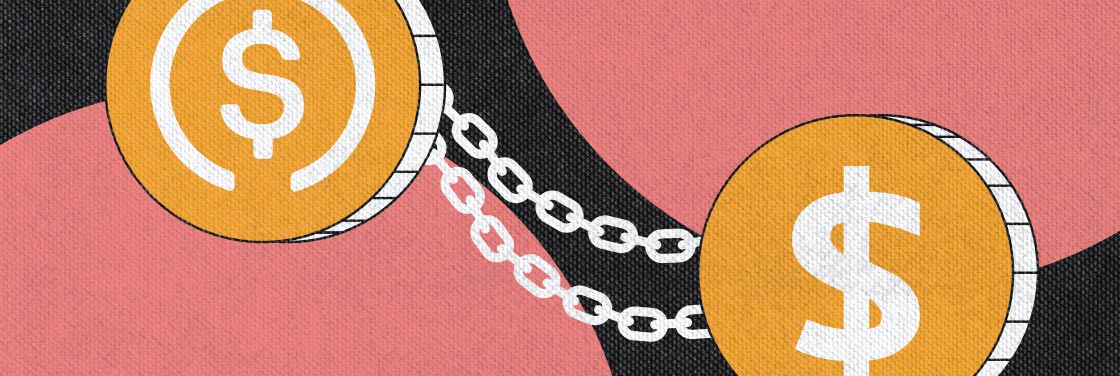If you’ve checked the news recently, you’ll have gathered that the UK and its economy are in turmoil. Government scandals, a newly appointed Prime Minister, and the ongoing cost of living crisis have seen bills go through the roof. Moreover, the recent passing of our Queen has left a large hole in our identity and we’re feeling a little worse for wear.
The announcement last week that the government was going to be scrapping certain taxes and hikes in social payments had left the IMF wondering: where was the money going to come from? Cue a catastrophic reaction from the markets and the biggest increase in government borrowing rates on record and a potential run on the pound. As soon as the deeply unpopular policies were announced, Truss was met with huge backlash and uproar. It didn’t take long for an embarrassing U-turn to be issued on her catastrophic policies, however, the damage had already been done.
Nevertheless, the millions wiped off assets and the pound’s tumultuous period got me thinking: what does this mean for crypto and could this be the moment when cryptocurrencies see their relevance in the world become mainstream? Let’s take a look at how crypto could offer some reassurance to savvy investors, the UK’s ongoing crypto regulations, and whether Liz Truss intends to keep Boris Johnson’s dreams of a UK crypto hub alive.
Stabilizing the Unstable

Along with the U.S. dollar and the euro, the British pound is one of the world’s major currencies. Banking institutions, a long history of regulations, and stability are the standing stones that have made the pound what it is today. Currently, stability is lacking and the decisions taken by Liz Truss and the newly-appointed Chancellor of the Exchequer, Kwasi Kwarteng, have seen the pound take a tumble. More shockingly, the Bank of England had to step in with a £65bn ($73bn) gilt intervention, which prevented the country from going into full financial meltdown. Prior to such actions, the pound continued its decline toward near parity with the U.S. dollar.
Such dramatic events resulted in calls for Kwarteng to be sacked and threats of letters of no confidence being submitted. It’s safe to say that Truss’s premiership hasn’t started as smoothly as one may have hoped. Of course, a declining pound has serious knock-on effects. One positive outcome was that a cheaper pound would lead to increased exports, yet as we all know, when the cost of borrowing goes up, imports become more expensive, and the cost of living crisis is exacerbated. Consumers in the UK are being warned that this winter could see monthly household bills rocket by 80% — an absolutely impossible situation. At this point, there seems to be little sign of a light at the end of the tunnel.
It’s All About Stability

Interestingly, during the time of Winston Churchill, the British pound could buy 4 U.S. dollars – an absolutely astounding amount compared to near parity in 2022. What’s more, the pound’s historic high to the dollar was just over 1 GBP — 5 USD in 1934, which goes to show how government policies and decisions can have a dramatic effect on a country’s currency and the lives of its citizens.
Eventually, the current situation calmed down following the BoE’s intervention. What this did was essential stabilize the currency. This opens up a very interesting point: fiat currencies are accepted as “real” currencies by everyone. Arguing the value of a currency like the U.S. dollar takes little to no effort, yet USDT… well, let’s just say that the addition of that “t” at the end can quickly see the situation shift from favorable to unfavorable. Fiat currencies are backed by government institutions, central banks, and assets to keep that price supported. However, as we have seen with the example of the British pound, a change in policy can see that supposed “stable” currency go into freefall.
If we take a look at stablecoin cryptocurrencies, we can see a similar situation. The currencies are backed by enough assets to keep their currency pegs constant. It is true that regulations in different countries can have a knock-on effect when it comes to the value of crypto. Moreover, the popularity of projects, demand, and circulation drastically influence its currency’s value. Stablecoins, by contrast, focus on keeping that peg. The stability attracts usage and user confidence. Some have even suggested that stablecoins could be a better option to CBDCs due to issues surrounding privacy and control of finances. This could see policies imposed such as penalties for saving, tax increases, and even currency confiscation. After all, decentralization is key and doesn’t depend on a single government or country.
Is This Crypto’s Time to Shine?

Economies, banks, and people alike love stability. It allows us to plan our lives and businesses and keeps everything we do in check. Take away that stability and you’re left with chaos. For centuries, government-backed currencies have been the norm. Before that, gold or other commodities were accepted currencies. We’re now in the 21st century and the technological age. It only seems fitting that our currencies are tech-backed. As more countries recognize crypto as income, we start to see an emerging picture of acceptance and common use. Access is becoming less of a problem as time goes on. Platforms such as Binance with their visa card mean users can directly access and spend their money, essentially bridging the gap between the virtual and physical worlds.
It doesn’t take a genius to gather that cryptocurrencies are volatile. Some users are quick enough to make a profit before the markets turn, while others get burnt. Periodic instability and fluctuations in the financial market can provide great opportunities to earn, yet for those who are a little more cautious, stablecoin staking offers a safer way to earn whilst you ride out the storm.
The whole point of stablecoins is to give that added security, which not only provides security for holders, but also a viable way for people to trade and use crypto. When it comes to value, cryptocurrencies can be backed up by gold or fiat currencies. If we take USDT as an example, the currency is backed by USD in a 1:1 ratio. The USD used to back up the stablecoin can come in all shapes and sizes, so don’t get any ideas of Scrooge McDuck diving into a pool of money. Ripple Labs recently partnered with Stably to create the Stably USD (USDS) stablecoin. Fully backed by fiat assets and armed with Ripple’s technologies, the stablecoin will comply with U.S. regulations. On top of this, it’ll be based on an “ultra-fast, low-cost, and carbon-neutral public blockchain.”
Stablecoins offer users a chance to ride out storms in both the physical and crypto world, plus the liquidity to move assets and even potentially make gains along the way. The point is, the principle is there and the technology works. During the height of the crypto crisis of 2022, USDT lost its dollar peg. It took until from May to July 19 to regain it.
Stability is a real sticking point when it comes to crypto. There are still many out there that see it as “magic beans” despite the market being worth billions of dollars and millions of people using it in their daily lives. Nevertheless, assurances and strengthening regulations didn’t stop a bill from being put to a vote in the U.S., essentially calling for the criminalization of the creation or issuance of new stablecoins. At the same time, U.S. lawmakers are facing an uphill battle to get crypto legislation passed. The current situation really represents what I would call an “ideological war” of the past vs. the future. Remember, if a currency is seen as desirable, accessible, and safe, it can see its value explode as people flock to sure up their finances. The next stage for stablecoins is to prove themselves, firstly, in the long run, and, secondly, legit and not some black hole.
A Quick Check-Up

Now we turn our attention to the UK’s crypto progress. The British government has proposed a very interesting piece of legislation to give law enforcement agencies the power to “seize, freeze, and recover crypto assets.” Crypto cyberspace has been hampered with stories of fraud, theft, and hacks, so this could really see a change in the way we hold criminals accountable and stretches as far as the war on drugs, cybercrime, money laundering, and terrorism financing.
As Liz Truss has only recently formed her government, we ought to wait for the dust to settle before we see her plans for the crypto world in all their glory, yet, Truss has made her feelings toward crypto very clear, even as far back as 2018, when she tweeted, “We should welcome #cryptocurrencies in a way that doesn’t constrain their potential. Liberate free enterprise areas by removing regulations that restrict prosperity”.
We should also recall that the foundations set by the UK’s previous government continue to be built on, and the so-called “Seize, Freeze and Recover Law” are setting the stage for great things. Truss may have started her term in office with a bit of a bump and certainly, such huge tax breaks were intended to stoke massive growth. Although things haven’t worked out quite as she would have hoped for, a similar approach with the crypto world could be exactly what the UK is looking for to finally boost its crypto sector!




